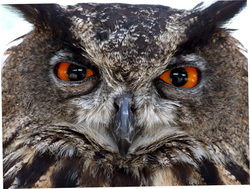 Photo: Jennie Rainsford
Photo: Jennie Rainsford This Sunday is Superb Owl Sunday: A day when Americans and owl fans the world over sit down with some fantastic cheese-covered foodstuffs and partake in observing the glory, the superb creature, that is the OWL.
Thanks to Stephen Colbert's wariness of copyright infringement and what appears to be some genuine misspellings of the words 'super bowl' on twitter, the birding world is atweet with witty memes and photos of owls in all of their superb-ness.
Thanks to Stephen Colbert's wariness of copyright infringement and what appears to be some genuine misspellings of the words 'super bowl' on twitter, the birding world is atweet with witty memes and photos of owls in all of their superb-ness.
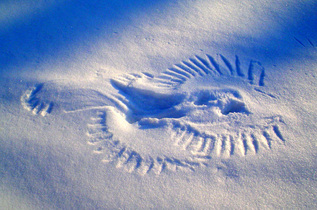 Owl print. Photo by Kay Schlumpf
Owl print. Photo by Kay Schlumpf Why should owls be receiving any attention in a week when professional athletes will be paid millions, nay, billions, of dollars to run across a field? Here's my shortlist of why owls are amazing and deserve to share the spotlight:
1. Owls can fly- SILENTLY.
As the stealthiest hunters out there- owls can fly without making a sound. Well, they do make a small amount of noise, but the wind that you'd normally hear whooshing around the wing of a falcon is nearly inaudible. This is because of comb-like serration on the leading edge of their wing feathers, combined with a soft back edge that muffles any sound. Owls also have extra down around their flight feathers and on their bodies, both for sound absorption and keeping warm- also, see point 5.
1. Owls can fly- SILENTLY.
As the stealthiest hunters out there- owls can fly without making a sound. Well, they do make a small amount of noise, but the wind that you'd normally hear whooshing around the wing of a falcon is nearly inaudible. This is because of comb-like serration on the leading edge of their wing feathers, combined with a soft back edge that muffles any sound. Owls also have extra down around their flight feathers and on their bodies, both for sound absorption and keeping warm- also, see point 5.
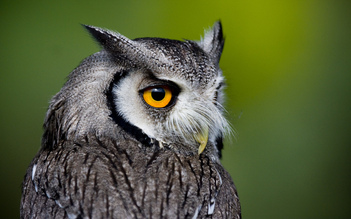 Photo by Stewart Richards
Photo by Stewart Richards 2. They can (almost) turn their heads around.
Famous fact known by most school children. Owls can turn their heads 270-degrees- all the better for surveying and listening to their surroundings (point 4) while waiting on a perch for prey to reveal itself.
Famous fact known by most school children. Owls can turn their heads 270-degrees- all the better for surveying and listening to their surroundings (point 4) while waiting on a perch for prey to reveal itself.
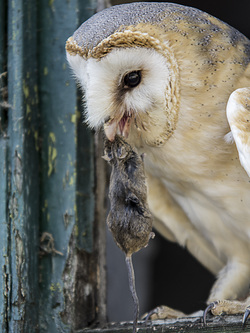 Barn own. Photo by Chris Judge
Barn own. Photo by Chris Judge 3. Owls eat a ton of rodents.
Owls are birds of prey, and, depending on the species, their diets can include mammals, birds, lizards, insects and even fish. From my perspective as someone studying the pest-control services from birds for farmers, the rodent-gobbling habits of species such as the barn owl are incredible. Farmers here in California are flocking to encourage barn owls into their fields, since a single barn owl eats a minimum of one rodent per night. Using conservative estimates from data collected at a single California vineyard where owl boxes had boosted the population of owls to 102 individuals, Mark Browning and a team of scientists worked out that over 24,000 rodents were consumed by hungry owls over two years. That's 24,000 rodents in ONE vineyard. We have been talking to farmers near Davis about carrying out similar studies here to measure the economic benefits that they receive from barn owls.
Owls are birds of prey, and, depending on the species, their diets can include mammals, birds, lizards, insects and even fish. From my perspective as someone studying the pest-control services from birds for farmers, the rodent-gobbling habits of species such as the barn owl are incredible. Farmers here in California are flocking to encourage barn owls into their fields, since a single barn owl eats a minimum of one rodent per night. Using conservative estimates from data collected at a single California vineyard where owl boxes had boosted the population of owls to 102 individuals, Mark Browning and a team of scientists worked out that over 24,000 rodents were consumed by hungry owls over two years. That's 24,000 rodents in ONE vineyard. We have been talking to farmers near Davis about carrying out similar studies here to measure the economic benefits that they receive from barn owls.
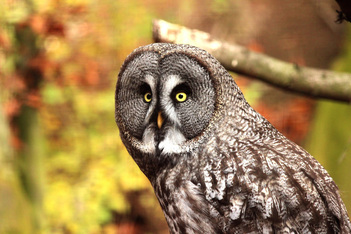 Great grey owl. Photo by Donald Windley
Great grey owl. Photo by Donald Windley 4. Owls hear with their faces.
Owls' flat faces and specialized feathers form a facial disc that directs sound to their ears. As the video below says, their face is basically a giant ear. Hunting at night, owls can see much better in the dark than we can, but it's their exceptional hearing that often clues them in to their next meal. Owls can hear so well that they can pick out a nibbling rodent under a few inches of snow (see the excellent photo above by Kay Schlumpf).
Owls' flat faces and specialized feathers form a facial disc that directs sound to their ears. As the video below says, their face is basically a giant ear. Hunting at night, owls can see much better in the dark than we can, but it's their exceptional hearing that often clues them in to their next meal. Owls can hear so well that they can pick out a nibbling rodent under a few inches of snow (see the excellent photo above by Kay Schlumpf).
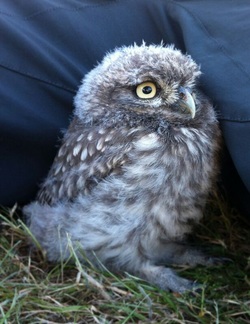 Speckles the little owl
Speckles the little owl 5. Owls are fluffy and cute.
Ridiculously so. As we've already discovered, owls are loaded with extra down, making them fluffier than most birds of prey. Their large, forward facing eyes and round facial discs give them the features that humans find adorable. They also have wonderful personalities. Case in point: here is a photo of a baby owl named speckles. He was rescued by my colleague in New Zealand, Diana, who is the local bird rehab guru in the town I used to live in. Now, Specks was found in the middle of a paddock as an owlet (probably dragged out of his nest by a house cat that then got bored and left him). He was so small that he wasn't able to keep warm, and had no feathers. As an introduced species in New Zealand, Little Owls' aren't protected, so Diana raised him by hand at home. He's imprinted on humans, which is not normally something you'd want to do to a rescued owl, but in his case- he's being primed for stardom. Specks will be used for education in local schools to teach kids about owls- and hopefully to get them more interested in their native owl, the Morepork. For me though, I got the chance to hang out with this adorable, friendly, baby owl when he was just starting to take his first flights. He liked the back of his head to be scratched, preferred sitting on my shoulder or head (but was still quite happy perched on one pinky), and he didn't like the family dog. Sitting around the table, he settled down in my lap one night and then neatly tucked himself in by pulling the bottom of my sweater over himself. Awwwwwwwwwww.
Ridiculously so. As we've already discovered, owls are loaded with extra down, making them fluffier than most birds of prey. Their large, forward facing eyes and round facial discs give them the features that humans find adorable. They also have wonderful personalities. Case in point: here is a photo of a baby owl named speckles. He was rescued by my colleague in New Zealand, Diana, who is the local bird rehab guru in the town I used to live in. Now, Specks was found in the middle of a paddock as an owlet (probably dragged out of his nest by a house cat that then got bored and left him). He was so small that he wasn't able to keep warm, and had no feathers. As an introduced species in New Zealand, Little Owls' aren't protected, so Diana raised him by hand at home. He's imprinted on humans, which is not normally something you'd want to do to a rescued owl, but in his case- he's being primed for stardom. Specks will be used for education in local schools to teach kids about owls- and hopefully to get them more interested in their native owl, the Morepork. For me though, I got the chance to hang out with this adorable, friendly, baby owl when he was just starting to take his first flights. He liked the back of his head to be scratched, preferred sitting on my shoulder or head (but was still quite happy perched on one pinky), and he didn't like the family dog. Sitting around the table, he settled down in my lap one night and then neatly tucked himself in by pulling the bottom of my sweater over himself. Awwwwwwwwwww.
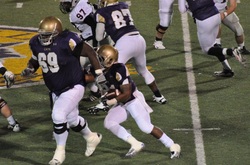
6. Owls are badass hunters.
Just one example, of many. Great horned owls are renowned for their badass hunting abilities. On top of their normal safe diets of rodents and birds, these large owls are sometimes known to get brave and take down a skunk! Skunks weight between 6 and 8 pounds, while a female Great horned owl tips the scales at 3.7 pounds. So, being conservative here (assuming an average female owl versus a small skunk), these birds are able to take down prey 1.6 times their own mass. Thinking about football, that would be the equivalent of Payton Manning (who weighs 230 pounds) taking out Michael Jasper (375 pounds), the second-heaviest player in the NFL.
Just one example, of many. Great horned owls are renowned for their badass hunting abilities. On top of their normal safe diets of rodents and birds, these large owls are sometimes known to get brave and take down a skunk! Skunks weight between 6 and 8 pounds, while a female Great horned owl tips the scales at 3.7 pounds. So, being conservative here (assuming an average female owl versus a small skunk), these birds are able to take down prey 1.6 times their own mass. Thinking about football, that would be the equivalent of Payton Manning (who weighs 230 pounds) taking out Michael Jasper (375 pounds), the second-heaviest player in the NFL.
This video may have the best opening statements of all times:
"Baby owls are called owlets and they look like a cotton ball that grew a face... and legs.
Owlets are born without flight feathers and because they are vulnerable they camouflage themselves... as muppets."
"Baby owls are called owlets and they look like a cotton ball that grew a face... and legs.
Owlets are born without flight feathers and because they are vulnerable they camouflage themselves... as muppets."
I see some pretty wonderful halftime ad opportunities featuring owls.
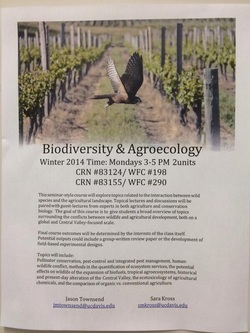
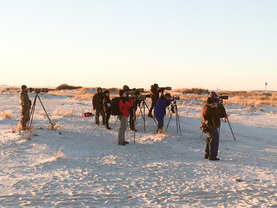
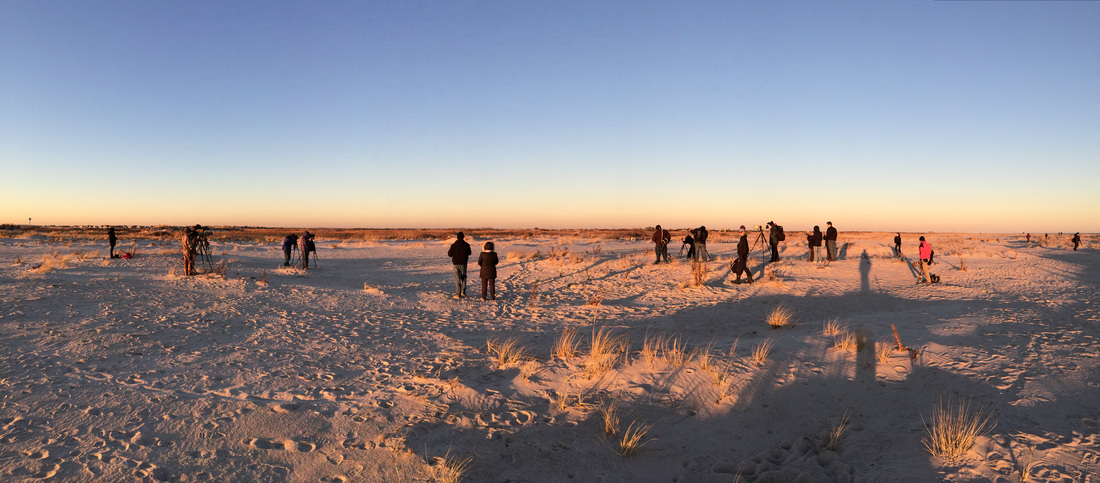
 RSS Feed
RSS Feed
